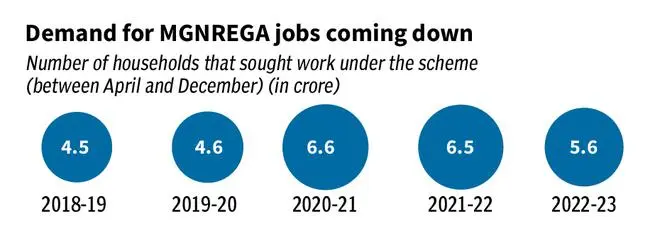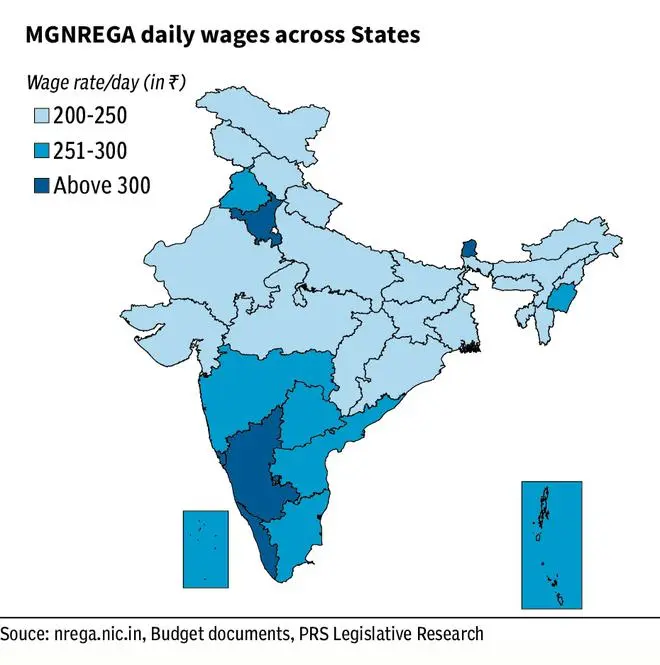When the pandemic struck around three years ago, the Mahatma Gandhi National Rural Employment Guarantee Act emerged as a lifeline to the rural population, most of whom had come back home from the cities owing to the lockdown. With pandemic related stress continuing to be felt in rural areas, demand for MGNREGA jobs continues to be high.
Between April and December 2022, 5.56 crore households sought work under the scheme. Though this is close to one crore households lesser than the corresponding period of FY22, it is still 21 per cent higher than pre-pandemic demand.
In such a scenario, how much would the Budget allocate for the scheme for FY24?
Allocation over years
A close look at the Budget allocation for the scheme over the last decade shows that funding for MGNREGA has been going up consistently since FY16. The increase was the sharpest, at 55 per cent, between FY20 and FY21, owing to the pandemic. That year, a massive ₹1.11 lakh crore was allocated for the scheme. In FY22, it went down to ₹98,000 crore and then to ₹73,000 crore in FY23. However, the Centre recently sought supplementary grants worth ₹45,174 crore for the scheme.
Madan Sabnavis, Chief Economist at Bank of Baroda, believes that the allocation for the scheme for FY 24 could be close to the sum budgeted for in FY23. “Under any normal circumstance, the government would stick to its Budget in FY23. However, there are chances of an increase, if there’s adversity in the rural economy,” he says.



Falling short
The mission statement of MGNREGA, which was passed in 2005, reads, “It aims to enhance livelihood and security in rural areas by providing at least 100 days of employment in a financial year to every household.” However, an analysis of MGNREGA data by PRS Legislative Research shows that from 2016-17 to 2020-21, the average number of days of employment was 48 days per household, with a maximum of 52 days of employment in 2020-21. Our estimates also show that in FY23, until January, the average employment per household has been 40 days.
Nikhil Dey, a founding member of the workers and farmers solidarity group Mazdoor Kisan Shakti Sangathan, says that in a situation like this, the allocation for the scheme should be at least ₹1.4 lakh crore, to ensure that wages are paid on time and that the labourers get 100 days of employment, as promised. He also notes that in no financial year, since the implementation of the scheme, the 100 days target was met.
“Obviously the allocation will be higher the next year because prices of materials and wages have gone up. However, the allocation will be way lesser than how much it should ideally be,” he says, adding that the only year that saw a good allocation was 2020-21, during Covid. “Even then, there was a ₹15,000-crore shortfall, by the end of the financial year.”





Comments
Comments have to be in English, and in full sentences. They cannot be abusive or personal. Please abide by our community guidelines for posting your comments.
We have migrated to a new commenting platform. If you are already a registered user of TheHindu Businessline and logged in, you may continue to engage with our articles. If you do not have an account please register and login to post comments. Users can access their older comments by logging into their accounts on Vuukle.